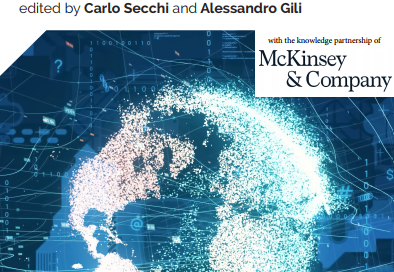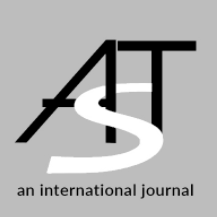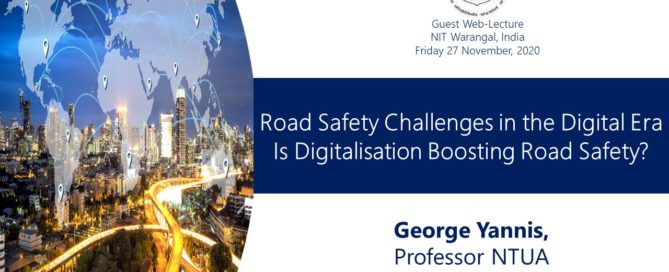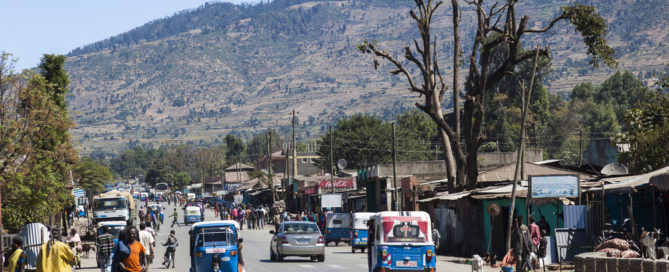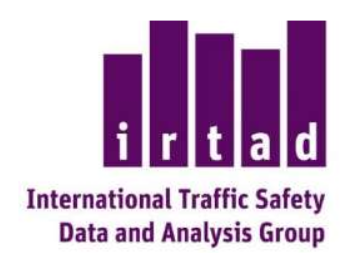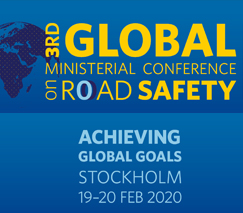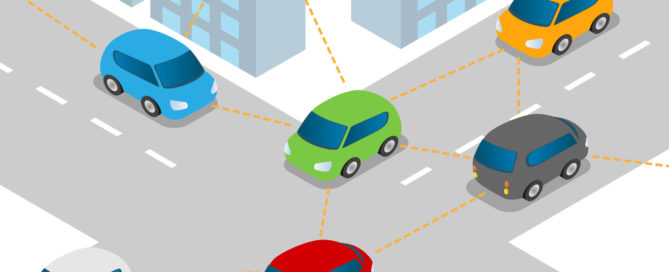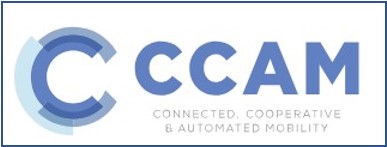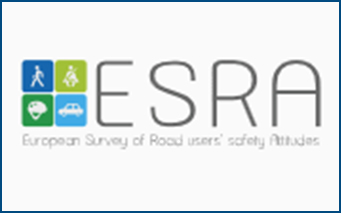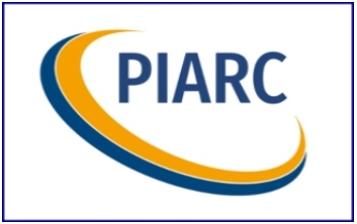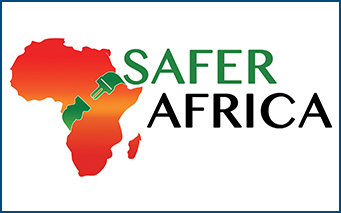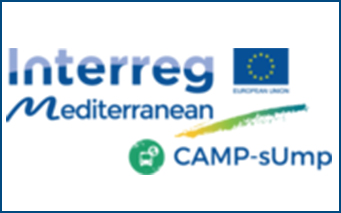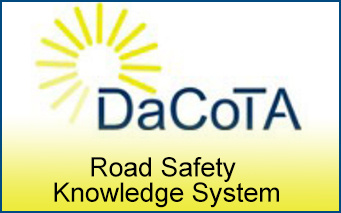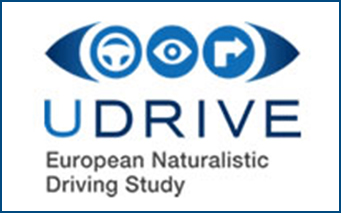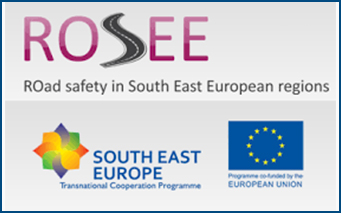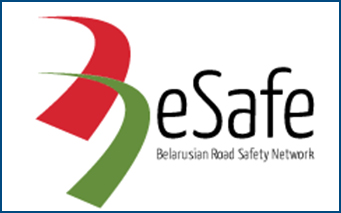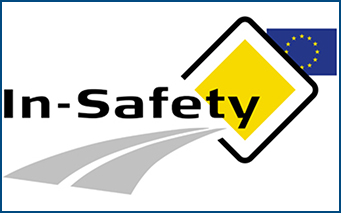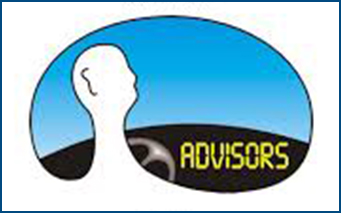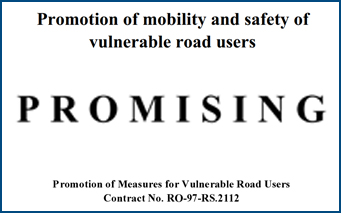Safe Mobility everywhere and for all in 2023
Getting into 2023, we steadily progress in our scientific excellence quests with persistence, dedication and passion to promoting evidence based safe mobility everywhere and for all. The decade targets and programs for safer roads everywhere are well set globally and we should strengthen our individual and collective efforts to sincerely include traffic safety into the mobility agenda and start implementing the vision zero traffic fatalities. We thank you all for the excellent cooperation and we are sending you our very best wishes for Merry Christmas and a Very Lucky New Year, full of personal and professional achievements. ![]()
Digitalisation for Sustainable Infrastructure : The Road Ahead, October 2022
A new book titled “Digitalisation for Sustainable Infrastructure : The Road Ahead” has been published on October 2022, highlighting the importance of technology and digitalisation and the tremendous impact they have on infrastructure worldwide. This book was edited by Carlo Secchi and Alessandro Gili and was published by the Italian Institute for International Political Studies (ISPI). ![]() NTUA Associate Professor George Yannis and Research Associate Apostolos Ziakopoulos actively contributed with the following chapters :
NTUA Associate Professor George Yannis and Research Associate Apostolos Ziakopoulos actively contributed with the following chapters :
Are driving errors and driving performance correlated? A dual structural equation model, April 2021
A paper titled “Are driving errors and driving performance correlated? A dual structural equation model” authored by Panagiotis Papantoniou, George Yannis and Eleni Vlachogianni is now published in Advances in Transportation Studies. The objective of this paper is to investigate several factors (including driver distraction, driver characteristics and road environment) that affect overall driving error behaviour and estimates a new unobserved variable which underlines driving errors. This estimation is performed with data obtained from a driving simulation experiment in which 95 participants covering all ages were asked to drive under different types of distraction (no distraction, conversation with passenger, cell phone use) in rural and urban road environment, as well as in both low and high traffic conditions.
i-DREAMS – Συμμετοχή σε πείραμα οδήγησης σε πραγματικές συνθήκες, Απρίλιος 2021
Η ερευνητική ομάδα οδικής ασφάλειας του ΕΜΠ, στο πλαίσιο του έργου i-DREAMS του Horizon 2020, αναζητά οδηγούς στην Αθήνα για να συμμετάσχουν σε πείραμα σε πραγματικές συνθήκες οδήγησης. Στόχος του Πειράματος είναι η παρακολούθηση της ασφάλειας της συμπεριφοράς οδήγησης και η αντίστοιχη ειδοποίηση των οδηγών κατά την οδήγηση αλλά και η ενημέρωσή τους μετά το τέλος του ταξιδιού. Οι οδηγοί θα ωφεληθούν σημαντικά από τη διάγνωση της ασφάλειας της οδήγησής τους και τις σχετικές προτάσεις βελτίωσής της. Όλοι/ες οι συμμετέχοντες/ουσες θα λάβουν δώρα επιβράβευσης και επιπλέον δώρα μετά από διαγωνισμούς και κληρώσεις. Για συμμετοχή στο πείραμα, μπορείτε να συμπληρώσετε το σχετικό έντυπο συμμετοχής. ![]()
![]()
![]()
Is Artificial Intelligence the future of road safety? by George Yannis, February 2021
Is Artificial Intelligence the future of road safety?
Artificial Intelligence and Machine Learning techniques are currently used in several road safety related applications, supporting decision making of both the Authorities and the road users and transforming and upgrading significantly the potential for road safety improvement worldwide:
– In vehicle technology, AI algorithms are implemented to exploit computer vision and interpret data provided by RADAR and LIDAR technologies in both traditional and Connected and Automated Vehicles. Today, most car-makers invest seriously in AI.
– In road infrastructure risk prediction, AI applications can transform big data on crash occurrence and road and traffic characteristics from infrastructure sensors into multi-dimension static or dynamic maps of road risk prediction and road star rating. Rotterdam and London are currently among the front-runners.
– In telematics assisted driver behaviour monitoring, AI can exploit big data from vehicles and smartphones to identify risky behaviours like speeding, harsh manoeuvring and distraction and provide customized solutions, including driver behaviour star rating. Fleet safety management and insurance exploit today telematics applications.
A series of highly important opportunities and critical barriers persist today requiring serious effort in order to guide significant changes in road traffic crash prevention and boost road safety globally. An holistic approach is needed tackling all three key areas: Capacity, Knowledge and Governance.
Firstly, the Digital era is bringing today a tremendous higher new Capacity of Big Data, which can be exploited to support road safety. This big data capacity requires serious effort by both Data and Traditional Industries, in order to be properly transformed into useful road safety analysis tools and targeted and efficient solutions, which were impossible in the past. On that purpose, specific data contents and data flow restructuring and adjustments are needed, transforming road safety data from bi-product to core activity.
Secondly, Artificial Intelligence brings a high potential for significant upgrade of Knowledge on road risk, with more accurate information on crash characteristics and the related causalities exploiting new and detailed data on risk exposure and Key Performance Indicators of the road users, the vehicles and the infrastructure. Researchers and Scientists have a key role to evolve towards highly multi-disciplinary approaches combining data, technology and road safety expertise, together with appropriate integration skills to ensure seamless and holistic approaches from data driven problem identification to customized and dynamic highly efficient solutions.
Thirdly, the full exploitation of Artificial Intelligence potential requires appropriate Governance adaptations by both the Industry and the Authorities.
– The Industry should exploit and develop new and innovative business models brought by the continuously growing big data available, but also be ready for key cooperations, especially between data, vehicle, road and insurance industries, and to upgrade the road safety sector with high profits for the industry, the society and the economy.
– Pubic Authorities should exploit the opportunities and facilitate AI road safety applications, by protecting society values, like private data, open data and fair competition on one hand but also supporting change with new rules ensuring the necessary efficiency and flexibility.
Artificial Intelligence is the future of road safety. Coordinated efforts at national and international level, to upgrade capacity, knowledge and governance by the Industry, the Researchers and the Public Authorities can bring highly efficient solutions for safer drivers, safer vehicles and safer roads, making Artificial Intelligence as the catalyst for achieving vision zero road fatalities by 2050.
Contribution at the Round Table of the International Transport Forum on Artificial Intelligence in Road Traffic Crash Prevention, February 2021 ![]()
New Year – New Hope – New Values
We leave behind a strange year, lucky to continue progressing with great scientific achievements against all odds. We persisted with dedication and passion to promoting evidence based safe traffic everywhere and for all and much-needed new sustainable mobility schemes too.
We thank you all for the excellent cooperation and we are sending you our very best wishes for Merry and Safe Christmas and a New Year with New Hope and New Values, full of personal and professional achievements. Let’s hope that the exceptional shared responsibility during the pandemic will become the new trend for responsible traffic behaviour, making our roads much safer and soon victims-free, in line with the UN decade and vision zero targets.
May the spirit of true solidarity keep up our faith this Christmas and this New Year 2021: ![]()
![]()
ECTRI – Thematic Group Meeting on Safety, online, November 2020
The European Conference of Transport Research Institutes (ECTRI) organized with great success the TG Safety & Security Meeting, which was held online on 30 November 2020. NTUA actively contributed with the following presentations:
Digital Road Safety Web-Lecture, NIT Warangal, November 2020
NTUA Professor George Yannis gave a Web-Lecture titled: “Road Safety Challenges in the Digital Era – Is Digitalisation Boosting Road Safety?” at the National Institute of Technology Warangal (NIT), India. The Web-Lecture took place with great success on 27 November 2020 and it focused on the new great potential of data from several digital sources to efficiently support both safe driver behaviour and road safety decision making at all levels (2020-2030). ![]()
EIB: Ten Multilateral Development Banks increase commitment to road safety, November 2020
On 16 November 2020, the European Investment Bank (EIB) and nine other multilateral development banks (MDBs) signed a high-level joint statement on road safety, under the auspices of the World Health Organization and the United Nations Road Safety Collaboration. The statement highlights the MDBs’ aim to provide further access to safe, affordable and sustainable transport systems for all and to improve road safety, with special attention to the needs of vulnerable road users. ![]()
![]()
IRTAD 31st Meeting, virtual, 2020
The International Traffic Safety Data and Analysis Group (IRTAD) of the International Transport Forum (ITF) organised online the 31st Meeting on 22 October 2020, in which the latest international road safety developments were discussed.
NTUA contributed actively with the following presentation: ![]() Impact of COVID-19 on traffic safety behavior in Greece and worldwide
Impact of COVID-19 on traffic safety behavior in Greece and worldwide
Road Traffic Accidents Pandemic versus Covid-19 Pandemic by George Yannis, February 2020
Road Traffic Accidents is a Pandemic comparable to Covid-19 Pandemic
Covid-19 is a major pandemic with large number of victims (165.000 fatalities at mid-April 2020), which can be compared to the road traffic accidents pandemic (1,35 million fatalities and 50 million injuries per year globally). However, road traffic accidents pandemic has never being seeing by the global population and the Governments as such a serious health problem and traffic safety measures have never being considered so seriously and massively by the Governments neither accepted by the people, as with Covid-19 pandemic measures.
The effectiveness of Covid-19 pandemic massive measures for controlling the spread of the disease can be an excellent example for the need of more serious and massive measures on traffic accidents pandemic. Whereas road infrastructure safety improvement and safer vehicles penetration require several years before witnessing major results, traffic behaviour can certainly be controlled and improved much faster, if social acceptance is raised and political will is strong and sincere. Especially, managing efficiently (by police enforcement and massive campaigns) the five major traffic killers (speeding, mobile-phone-use, drink-and-drive, seat belt and helmet non-use) can be proved highly beneficial with a great number of lives saved even at short term.
Road traffic safety is highly critical during the Covid-19 pandemic period
During the traffic lockdown due to the Covid-19 pandemic, the number of road traffic casualties decreased significantly, mainly due to the dramatic traffic decrease ). However, first studies demonstrated that less traffic led to higher speeds and in some cases more casualties per traffic.
It is highly important that the burden of the health system during the Covid-19 pandemic period must not be further overloaded by the traffic safety casualties and efficient traffic safety measures should be taken as soon as possible. Especially, during the critical period of gradual removal of the lockdown measures, traffic accidents must not be increased again. These new traffic safety measures must be included in the Covid-19 measures package for the period after the lockdown. Focus should be given to the major traffic killers (speeding being the most important) and to measures bringing results quickly. For example, these measures could concern:
- New speed limits applying to all roads horizontally (with important benefits also for the environment):
- 30 km/h in urban areas (50 km/h in major urban axes)
- 50 km/h at rural roads
- 80 km/h at major interurban roads
- 100 km/h on motorways
- Speeding enforcement should be massively implemented through cameras (always on) and fines massive processing should be efficiently upgraded if necessary with new legislation urgently put in place.
- Intensification of enforcement of mobile-phone use and non-use of seat belts and helmets, eventually with any other Covid-19 related traffic controls.
- Implementation of massive campaigns (within those for the Covid-19) raising public awareness on speeding and the other major traffic accidents factors.
It would be ideal for the global public health, if these measures intensification should remain also after the Covid-19 crisis with tremendous benefits for traffic safety.
We should stop going blind on road traffic safety policies – we need appropriate data
Pandemic data proved being highly critical in early prognosis and mitigation during the different phases of the Covid-19 crisis. The contribution of the international scientific pandemics community proved catalytic in analyzing quickly large sets of data in time-series, international comparisons and measures effectiveness, providing decision makers strong scientific evidence for the necessary mitigation measures. Appropriate data analysis remains a critical pillar for containing the Covid-19 crisis.
On the contrary, the road traffic accidents pandemic lacks fundamental data and corresponding analyses to support the necessary traffic safety decisions. Crash data are fully unreliable in more than half of the countries in the world (including most Low and Middle Income Countries and several Emerging Economies). Traffic data necessary to combine with crash data in order to judge the size of the phenomenon are also blatantly missing. And most importantly, reliable data and performance indicators on key traffic accident factors, like speeding, mobile-phone use, drinking-and-driving, are simply not available (with exception in very few developed countries) and any evaluation of traffic safety measures effectiveness will always be largely piecemeal and with limited transferability in other places in the world. Successful technological solutions raised during the Covid-19 crisis can easily be also exploited for the necessary traffic safety data collection and analysis.
In short, today in road safety we work mostly in blind, as we have very little knowledge for the size and the root causes of the traffic accidents pandemic and consequently no appropriate policies, programmes and measures can be designed and implemented. Both the Authorities and the road users (drivers, passengers, pedestrians) underestimate largely the road traffic risk and the role of speed, of distraction, of alcohol, of fatigue, with major consequence that today road traffic safety measures are largely under-designed and even less accepted by the population.
In conclusion
Covid-19 pandemic is a great opportunity for more serious work for the road accidents pandemic. Serious work, adequate effort and budgets, major public acceptance proved bringing good results which nobody would thought could be possible before the Covid-19 crisis. Let’s recognize that traffic accidents are also a global pandemic and start devoting the effort, resources, budget and data deserved for such a major global health problem.
We need safer road traffic and no accidents during and after the Covid-19 pandemic and perhaps the Covid-19 crisis can be the trigger also for a new and serious behaviour of the Authorities and the citizens for safer roads for all, everywhere in the world.
NTUA Road Safety Observatory in figures 2019
The infographic of the 2019 NTUA Road Safety Observatory (www.nrso.ntua.gr) highlights one more very intensive year, striving with highly scientific expertise to improve road safety in Greece, in Europe and worldwide. The nrso team with excellent dedication, efficiency and expertise were active in 25 innovative research projects, succeeded to publish 59 scientific papers (20 in peer reviewed journals), and traveled at 40 cities in 4 continents to develop and promote their research, proud also for the two Prince Michael Awards (SafetyCube and SaferAfrica). In the new decade, we are even more committed to our scientific quest for safer roads everywhere and for all. ![]()
WHO – Recommendations for 2nd Decade of Action for Road Safety, 2020
Within the framework of the 3rd Global Ministerial Conference on Road Safety, co-organised by the World Health Organisation and the Swedish Government and will take place on 19–20 February 2020 in Stockholm the Academic Expert Group of the Conference has compiled a set of recommendations for a road safety strategy for the period 2020-2030 and some preliminary conclusions on the Decade of Action for Road Safety and the 2030 Agenda. ![]()
World Day of Remembrance for Road Traffic Victims 2018
The World Day of Remembrance for Road Traffic Victims is observed on the third Sunday of November each year (this year on 18 November 2018) by an increasing number of countries on every continent around the world. From 1995, the European Federation of Road Traffic Victims (FEVR) observed this day, as European Day of Remembrance, that was adopted by the United Nations in 2005, and is dedicated to remembering the many millions killed or injured in road crashes and their families and communities, as well as to pay tribute to the dedicated emergency crews, police and medical professionals who daily deal with the traumatic aftermath of road death and injury. The Alliance’s social campaign for World Day of Remembrance 2018 includes both global and local elements. ![]()
![]()
![]()
In Greece, EFTHITA Rhodes organised a special event on 18 November 2018 in Rhodes under the theme “We are singing for life” ![]()
Which are the autonomous vehicles’ critical choices?
Today the driver makes choices, tomorrow the choices will be made by the autonomous vehicles, by the autonomous traffic and by the people managing them. So there is need to “train” the vehicles, the traffic and the people managing them on how to handle a number of fundamental choices.
Firstly, a number of real time operational safety choices of the autonomous vehicles pertain. When a collision is unavoidable, what the autonomous vehicles should choose to hit: the tree/obstacle, another vehicle, a pedestrian or continue exploring avoidance of collision? Furthermore, in a conflict of two autonomous vehicles (connected or not) how their decisions should be coordinated for their safety and the safety of the other road users? These driver choices are taken also today without autonomous traffic, but nobody can keep real-time record of the driver risk perception and decisions, whereas the autonomous vehicles will allow for detailed monitoring of any choice and the programming behind it.
Second come choices about managing congestion and optimising traffic. Mathematically speaking, autonomous vehicles lower speeds lead to more congestion and traffic delays and the traffic optimisation achieved through the coordination of autonomous vehicles traffic (when all or most vehicles will be autonomous and/or connected) might not be sufficient to compensate these traffic delays. Transport demand can be well assisted through automated traffic management of the autonomous and/or connected vehicles. However, the accessibility easiness of autonomous traffic might explode transport demand at the limited road infrastructure available (more children, young elderly and other road users without driving licence will be exploiting the new autonomous reality), bringing thus an – impossible to estimate today – amount of higher congestion.
Finally, the issue of balancing safety with traffic optimisation will be more challenging than today’s random choices of drivers and other road users. How slow autonomous vehicle traffic should be designed in order to still being efficient? In every negotiation between the vehicle and the non-autonomous other road users (pedestrians, cyclists, power-two-wheleers) the balance between safety and traffic efficiency should be found. An extreme example situation could be that vehicles programmed to be very “safe and polite” might be well blocked by the other road users passing in front of them.
At the end of the day there is need for traffic and safety engineers to optimise such choices and decisions on traffic and safety, but also a lot of marketing to inform the society as clear as possible about all the pros and cons of these new choices.
Contribution at the Autonomous Vehicles Session of the 14th World Conference on Transport Research, Shanghai, July 2016
NTUA Marie Skłodowska-Curie project proposal awarded with Seal of Excellence 2016
The project proposal HumAV “Human like Autonomous Vehicles” submitted under the Horizon 2020’s Marie Skłodowska-Curie actions call H2020-MSCA-IF-2016 of 14 September 2016 by Panagiotis Papantoniou and Technische Universitaet Muenchen, following evaluation by an international panel of independent experts was scored as a high-quality project proposal in a highly competitive evaluation process. ![]()
New older drivers legislation in Greece with NTUA contribution 2016
A new Legislation regarding older drivers was recently adopted in Greece: ![]() O.G. 4413/2016 (Α’ 148), Article 74: Medical Assessment of Drivers and Candidate Drivers. According to this new Legislation, among other provisions, the minimum requirements for physical and mental fitness to drive were revised and all 80 years old drivers must complete a neurological, neuropsychological and psychiatric assessment in order to be considered as fit or not fit to drive. The results of extensive scientific research carried out jointly by NTUA and Attikon University Hospital have largely contributed to this new legislation.
O.G. 4413/2016 (Α’ 148), Article 74: Medical Assessment of Drivers and Candidate Drivers. According to this new Legislation, among other provisions, the minimum requirements for physical and mental fitness to drive were revised and all 80 years old drivers must complete a neurological, neuropsychological and psychiatric assessment in order to be considered as fit or not fit to drive. The results of extensive scientific research carried out jointly by NTUA and Attikon University Hospital have largely contributed to this new legislation.


